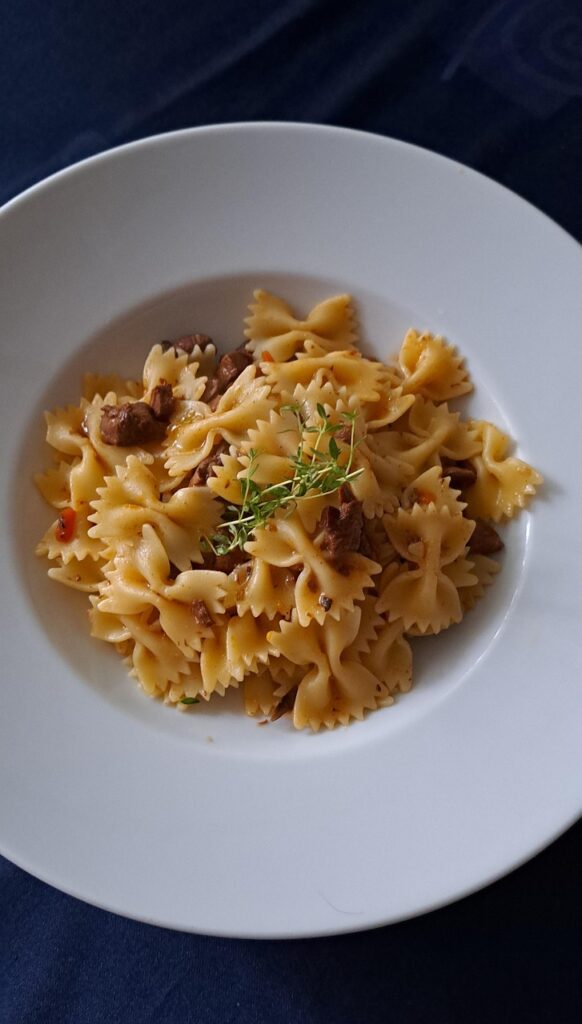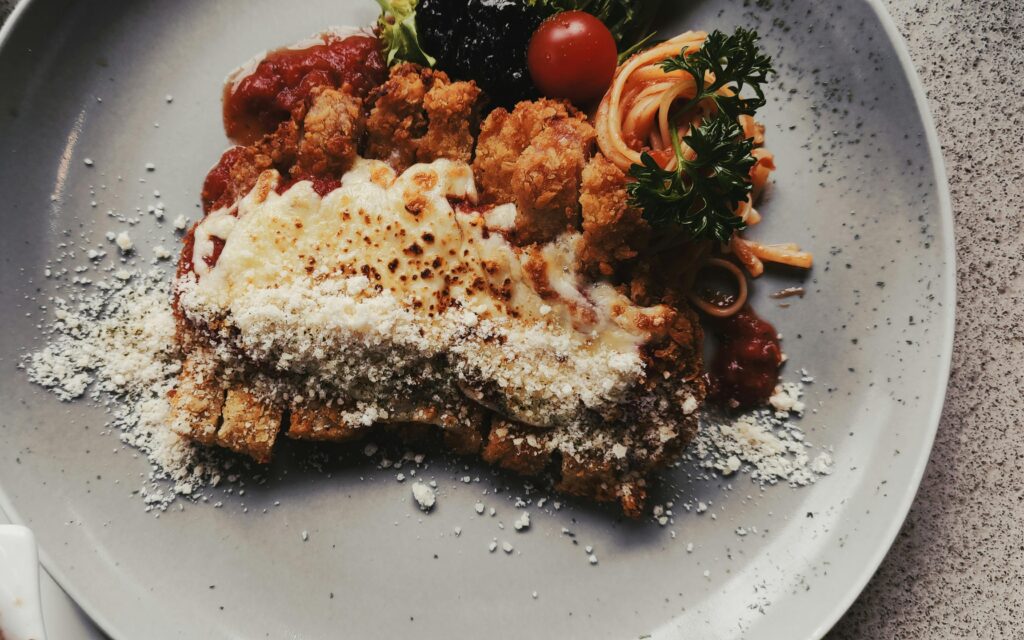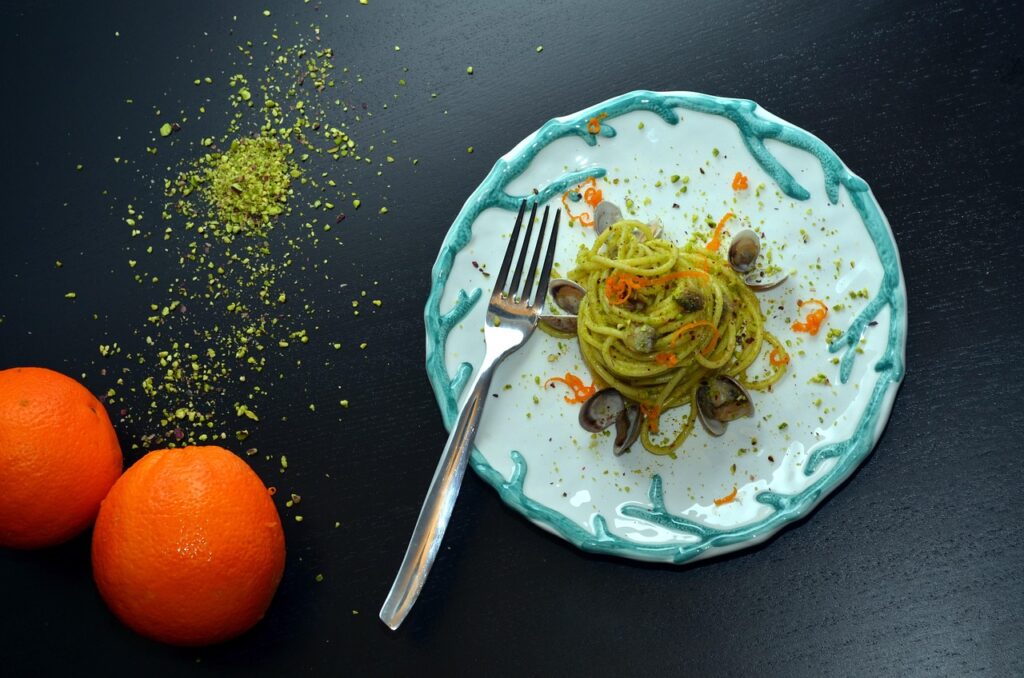Farfalle Pasta: 7 Delicious Secrets to Master the Classic Bow-Tie Shape
Farfalle pasta is the bow-tie of the pantry — playful, practical, and endlessly adaptable.
Why Farfalle PastaWorks
Small pockets and pinch points give Farfalle a friendly structure: the gathered center holds a little sauce, while the wings catch more. That dual personality makes this shape great with chunkier vegetables and light cream or butter sauces.
For reference and historical context, see the general entry on bow-tie pasta on Wikipedia and a brief primer on pasta shapes at MasterClass. Both are excellent background reads.
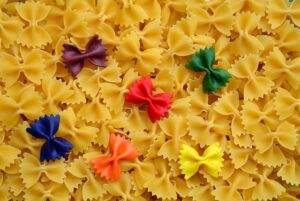
Dough, Shape, and Size
Use the right flour for Farfalle Pasta.
For classic texture, match semolina or 00 flour with the technique you prefer. Semolina gives a bite that pairs well with robust vegetables. All-purpose or 00 flour keeps the paste softer for delicate sauces.
Hydration and resting
One rule that rarely fails: let the dough rest. Hydration levels of around 30–35% for dry dough make it workable; wrapping it in plastic for 20–30 minutes or an hour at room temperature is usually sufficient.
Size matters
Farfalle comes in sizes from tiny to jumbo. Smaller pieces cook faster and are better suited for soups. Medium- to extensive bow ties shine in salads and cream sauces. Decide on the end use before cutting the wings.
Cutting and shaping techniques
There are three practical ways to make Farfalle: by hand, with a pasta cutter, or on a pasta board. Each produces a slightly different mouthfeel. Here are the steps I use most often.
1. Roll thin, cut rectangles
Roll the dough to a thickness of about 1–2 mm. Cut strips roughly 3.5–4.5 cm wide and 5–6 cm long for a medium piece. If you want mini Farfalle, go for a smaller size.
2. Pinch or press the center
Fold each rectangle in half lengthwise and press firmly in the center with your thumb and forefinger. Use a fork for a decorative center or a fluted wheel for a clean edge. The wings should bulge slightly to trap sauce.
3. Tip: slightly ruffle the wings
Gently ruffling the wings with the tines of a fork increases surface area and gives a satisfying bite once cooked.
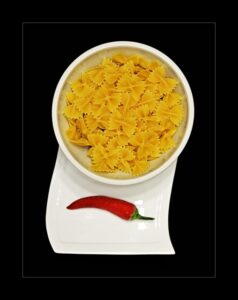
Cooking: timing and texture
Properly cooked Farfalle should be al dente — firm to the bite but not chalky. Because this shape varies in thickness (center vs. wing), follow two tactics:
Salted, rolling boil
Bring a large pot of water to a rolling boil and season it generously with salt. For fresh Farfalle, start checking at 1–2 minutes. For dried, store-bought items, follow the package timing, but taste earlier. Aim to undercook by about 10–15 seconds to finish in the pan.
Finish in the sauce
Transfer the pasta to the sauce with tongs and toss on medium heat for 30–60 seconds. This step lets the sauce cling and completes cooking without overworking the wings.
Best Sauces and Pairings
Farfalle is a generalist. It pairs well with cream, tomato, and oil-based sauces. The center pinch and wings change how the sauce adheres, making chunkier ingredients welcome.
Cream and mushroom
Use a light cream sauce with sautéed mushrooms, garlic, and parsley. The wings catch the cream; the center holds a little mushroom jus.
Tomato and roasted veg
Roasted cherry tomatoes, eggplan,t or bell peppers make a robust partner. Finish with basil and a drizzle of good olive oil.
Pasta salads
ColFarfallele salads benefit from firm, medium-sized pasta bows that retain their structure when chilled. Toss with lemon vinaigrette, olives, and a soft cheese like burrata post-chill.

Storing, Freezing, and Reheating
Leftover stores well. For best results, keep pasta and sauce separate if you plan to refrigerate them for more than a day.
Fridge
Store in an airtight container up to 3 days. Add a touch of olive oil to prevent sticking.
Freezer
Freeze raw, shaped Farfalle on a tray for 1 hour, then transfer to a sealed bag. Cook from frozen; add an extra minute to the boiling time.
Reheat
Gently reheat in a skillet with a splash of water or stock to revive the texture, or microwave briefly covered with a damp paper towel.
Three Pro Recipes of Farfalle Pasta
Each recipe below focuses on technique: shape, timing, and finishing.
1. Farfalle Pasta with Lemon, Peas, and Pancetta
CooFarfallele until very slightly underdone. Crisp-diced pancetta, add peas, and lemon zest. Add pasta, a splash of pasta water, and toss. Finish with pecorino.
2. Farfalle Pasta with Roasted Cherry Tomatoes and Burrata
Roast cherry tomatoes until they blister. Toss with pasta, and add a spoonful of ricotta, or tear burrata on top. Finish with basil and olive oil.
3. Creamy Mushroom Farfalle. Sear the mushrooms until golden, then deglaze with white wine and add a touch of cream, simmering until the sauce thickens. Toss with pasta and parsley. The gathered center soaks up the concentrated mushroom flavor.
Want full printable recipes with exact ingredients and weights? I can add them in a follow-up if you’d like standardized servings and nutrition information.
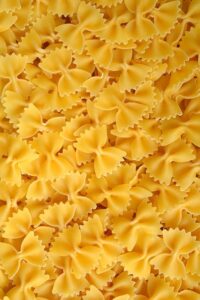
Related reads on Pastaloverz
More shape guides and recipes you’ll want to link in your site cluster:
Wrap-up: Make Farfalle Pasta, Your Playful Workhorse
It adapts. Whether you roll it by hand, shape it with a cutter, or purchase a high-quality dried version, the fundamentals remain the same: the right dough, precise cutting, a short finish in the sauce, and confident seasoning. Follow the seven secrets above and you’ll turn a simple shape into something memorable.
FAQ
How long should I cook Farfalle Pasta?
For fresh Farfalle, cook for 1–3 minutes, depending on the thickness. For dried store-bought Farfalle, cook for 8–12 minutes; taste earlier. Finish in the sauce for the best texture.
Can I freeze it fresh?
Yes. Freeze shaped Farfalle on a tray until firm, then transfer to a sealed bag. Cook from frozen and add an extra minute to the boiling time.
Is Farfalle Pasta suitable for salads?
Absolutely. Use medium-sized Farfalle and undercook slightly so the pieces stay firm when chilled. Dress with a vinaigrette and add hearty mix-ins like beans or roasted veg.
Which flour is best for Farfalle Pasta?
Semolina offers a toothy texture, while 00 or all-purpose semolina yields a silkier mouthfeel. Choose based on the sauce you plan to use.

